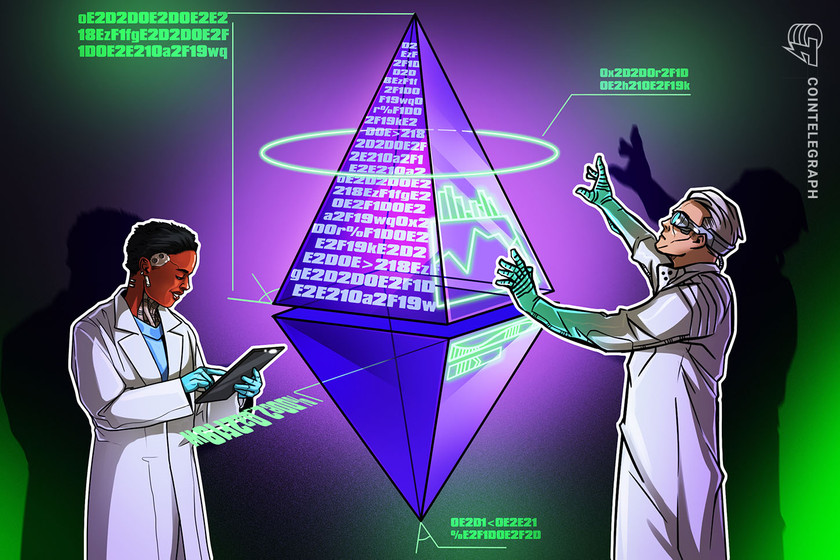
Steady adoption and internal growth back MATIC’s 118% gain, even as most altcoins struggle to hold on to their short-term gains.
Unlike bull markets where traders can basically throw a dart at a list of coins to pick one that will go up, bear markets require much more effort to find projects that could perform well over the long-run.
One project that has continued to show signs of mainstream adoption despite the onset of a crypto winter is Polygon (MATIC), a layer-two scaling solution for the Ethereum (ETH) network that is looking to build a sustainable Web3 infrastructure on the top smart contract platform.
Data from Cointelegraph Markets Pro and TradingView shows that since hitting a low of $0.316 on June 18 during the worst of the crypto market sell-off, MATIC has climbed 118% to $0.70 where the price now sits at a major support and resistance level that first appeared in March 2021.

Three reasons why the long-term outlook for Polygon remains positive include its continued adoption by mainstream entities, the migration of multiple projects to the Polygon network and an increase in the platforms offering liquid staking services for MATIC.
Major adoption announcements
Adoption by influential mainstream companies is one of the best forms of marketing that a blockchain platform can receive as it exposes them to a large pool of potential users.
In the past few months, Polygon has established partnerships with Coca-Cola, which released a pride series NFT collection on the network and Reddit, which announced that it was launching an NFT marketplace on the Polygon network on July 7.
Most recently, it was announced that Polygon has been selected by Disney to be the only blockchain included in the 2022 Disney Accelerator program, a “business development program designed to accelerate the growth of innovative companies from around the world.”
Interrupting the #GreenBlockchainSummit for some breaking news!
— Polygon - MATIC (@0xPolygon) July 13, 2022
We're excited to be the only blockchain chosen to be a part of the Disney Accelerator program. https://t.co/LaGU4bhidi
Protocols launch on Polygon
Further evidence of the rising popularity of Polygon as a go-to scaling solution for Ethereum has been the steady migration and integration of projects with the L2 network.
48 Projects are landing on @0xPolygon with OnePlanet
— OnePlanet ˡᵃⁿᵈⁱⁿᵍ ᵒⁿ ᴾᵒˡʸᵍᵒⁿ (@OnePlanet_NFT) July 8, 2022
Thanks to all the Ark*One partner projects and @polygonstudios, we are all moving together to rebuild and grow the NFT ecosystem #onPolygon
Read the full recap on Ark*One: https://t.co/lxTh6WVRJB pic.twitter.com/hnDtzmSA9S
Aside from the recent NFT projects that have migrated to Polygon, other new additions include the permissionless, credit protocol RociFi, and WOO network’s multi-chain decentralized exchange.
MATIC has also seen a growing number of platforms that offer liquid staking for the token which enables holders to earn staking rewards.
2/3 Farming opportunities:@LidoFinance & @BalancerLabs - 12% APY@Stader_Polygon & @Meshswap_Fi - 13% APY@Claystack_HQ - 9% APY@ankrstaking - 9% APY
— DeFi Pulse (@defipulse) July 12, 2022
Related: Terra projects band together in migration to Polygon ecosystem
Traders expect resistance at $0.75
As for what comes next for MATIC price, market analyst and pseudonymous Twitter user Crypto Tony posted the following chart suggesting that the token could head higher toward resistance at the $0.75 level.

Crypto Tony said,
“Looking for a flip of the EQ up to the range high. Would love to see us consolidate a bit longer underneath this area.”
This outlook was further reinforced by Trader McGavin, who posted the following chart noting that MATIC is “Filling out the ascending triangle and looks ready to breakout in the coming days.”

Trader McGavin said,
“A breakout would open up a move to $0.80 and then $1. Ton of positive catalysts over the last few weeks driving this big move off the lows.”
The views and opinions expressed here are solely those of the author and do not necessarily reflect the views of Cointelegraph.com. Every investment and trading move involves risk, you should conduct your own research when making a decision.











































